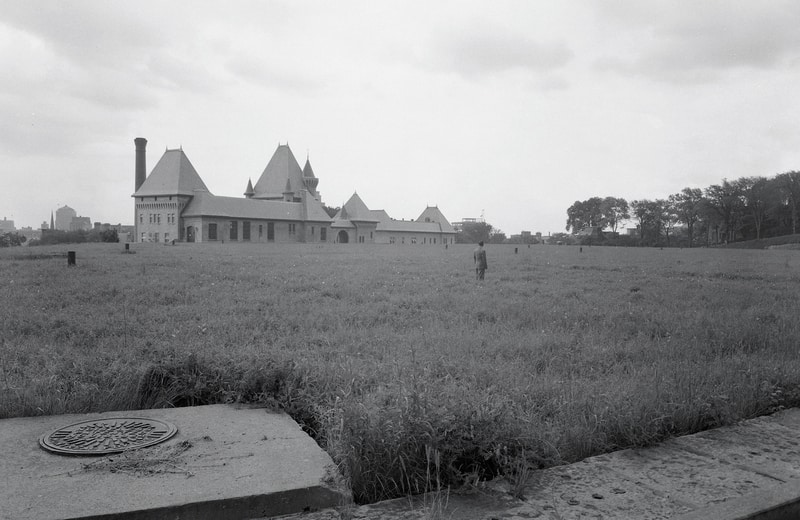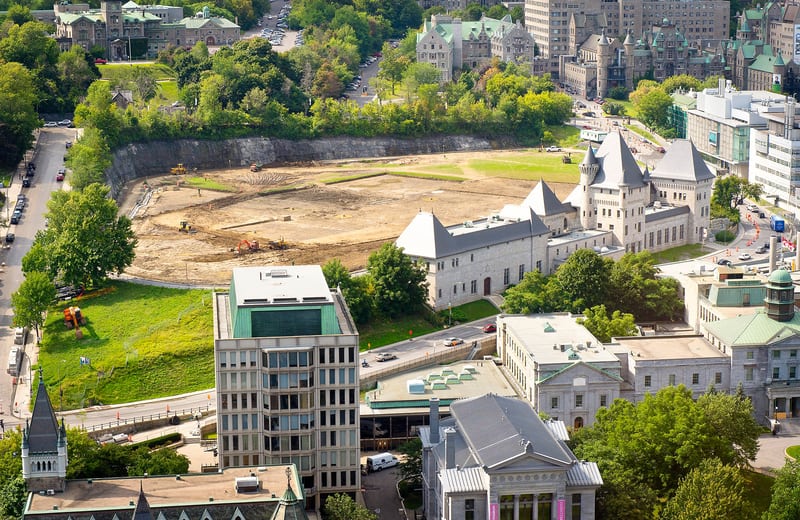A castle without a princess

 Photos Archives of the City of Montreal, Fund the park Service, VM105-Y-1-0382-006 Photo Chantal Poirier
Photos Archives of the City of Montreal, Fund the park Service, VM105-Y-1-0382-006 Photo Chantal Poirier
Centre d’histoire de montréal
Saturday, September 2, 2017 23:23
UPDATE
Saturday, September 2, 2017 23:23
Look at this article
A castle with your feet in the water
For a little bit, it’s like being in the French countryside. The illusion is almost perfect. This building looks like Rebirth is in fact the reservoir McTavish, built on the flank of the mountain, near the old Royal Victoria hospital, with which he composes a whole very coherent. In fact, more than half a million Montrealers depend on today of 40 olympic-sized swimming pools of drinking water that lie beneath the feet of this walker. Installed on these heights, in 1856, the tank, and then discovered, takes its name from the merchant of scottish origin Simon McTavish, who owned the land around it. It was decided to build following the great fire of 1852 which destroyed an entire sector of the east of the city and a large part of the water distribution system. Of the adjustments made in the 20th century allow 12 powerful pumps to draw water in the St. Lawrence river.
To quench the thirst of Montreal
This man-hole certainly gives access to the pipes located near the tank. The underground network of water pipeline has started to develop in the beginning of the 19th century, under the impulse of private companies. Previously, drinking water was supplied by wells, water carriers and the small rivers of the island. Fragile in the face of variations in temperature and insufficient in their scope, the first lines did not respond to the request. The service was municipalized in 1845. The City imposed a tax, and took charge of the maintenance of a more reliable system is put in place from the middle of the 19th century. The tank McTavish and the Atwater plant are nowadays related to these pipelines. It will still be a few improvements, upgrades and the replacement of buildings that were too old for that each dwelling has running water, but this time was a pivotal point for the modernization of a system of sewers and aqueducts that form the basis of the current system of the municipality.
The filtration plant Atwater
In 1854, a canal was dug on a plot of Verdun bought from the Sulpicians to bring water from the river and pump it into the tank McTavish. From 1912, after an outbreak of typhoid fever, we built a first filtration plant. This plant is named Atwater, of the name of the avenue that leads to it. It does not mean the direction of the river, as the legend says sometimes. It commemorates the president of the Commission of the aqueduct, Edwin Atwater, the name of which, we will admit, seemed predestined ! The plant receives and filters the water in the river, transported by the channel of the Aqueduct. From there, the pumps transport water up to the reservoir McTavish, who is in charge to distribute the precious liquid to the different areas of the city. The trio, Atwater-aqueduct-reservoir McTavish, one of the most important infrastructures for the city, has not ceased to develop and to modernize.
– Special Collaboration with the heritage Division of the City of Montreal



